How can business leaders improve how they do business
Build more accountability into your corporate culture to build more sustainable future for your business. Corporate governance is the way you do things. How do you do things? Ethically and successfully? Want to improve the way you do things? Want to improve your corporate governance?
Personal accountability corporate governance and risk management culture
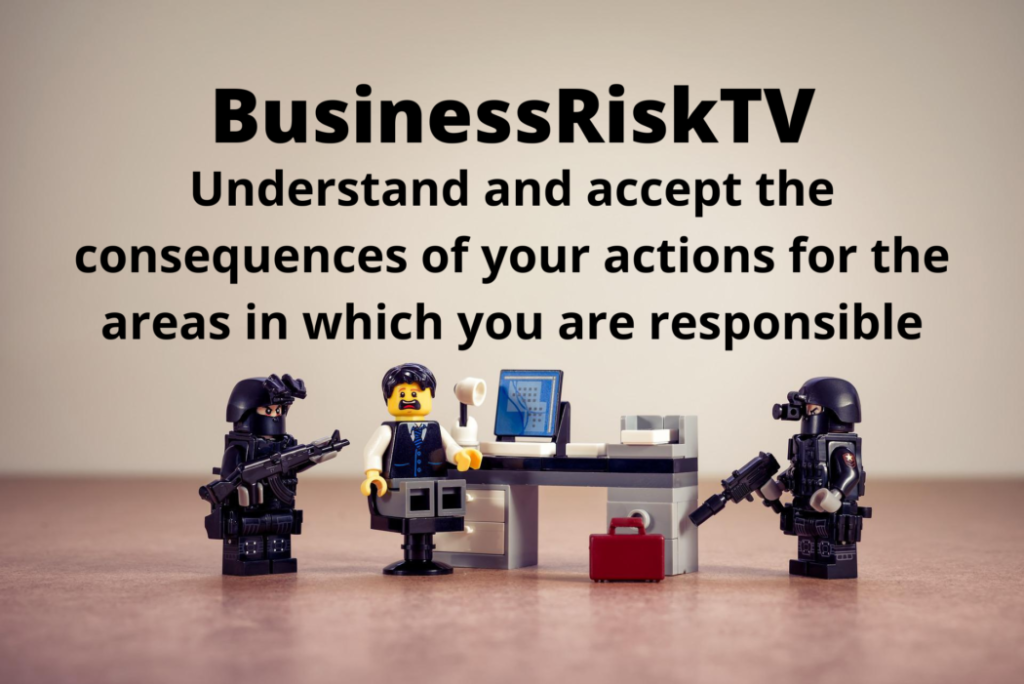

You will find related risk management articles and videos to develop your risk knowledge and business intelligence to improve your business decision making process
Subscribe to BusinessRiskTV for free corporate governance tips alerts bulletins and reviews to your inbox
Enter code #CorporateGovernance
Corporate Governance and Accountability Tips To Deliver Corporate Social Responsibility And Improved Business Performance
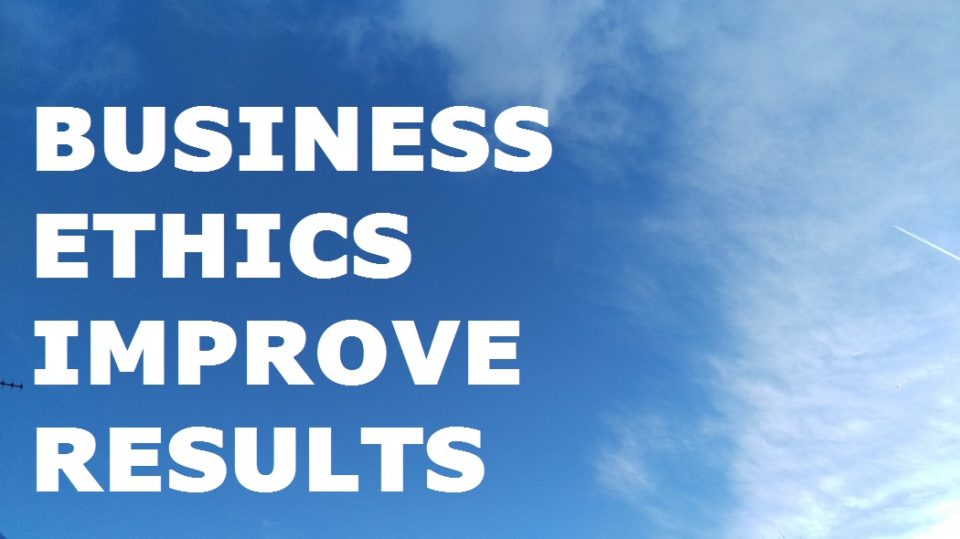
Subscribe to BusinessRiskTV.com Corporate Governance Tips enter code #CorpGov
Tips for good corporate governance for sustainable business development with less uncertainty. Find new ways to improve corporate governance in UK. Take the best practice steps in corporate governance to boost business sustainability.
Promote and market your business on BusinessRiskTV Corporate Governance Tips

Find out how to promote your business locally and globally. CLICK HERE or email editor@businessrisktv.com entering code #CorporateGovernanceTips
Put your products or services in front of more people already interested in your type of business offering before your competitors do.
Link into your existing online sales process direct from BusinessRiskTV or use our eCommerce solutions to increase your sales cash flow and profit.
Increase the sources of your revenue streams more sustainably. Grow your business faster with BusinessRiskTV.
Corporate Governance Live News Opinions Reviews
Latest corporate governance governance news headlines opinions debates risk analysis and reviews.
The way we do things matters?

Corporate Governance Failure Leads To Rio Tinto CEO Losing Bonus
The chief executive of Rio Tinto will lose his performance linked bonus this year over the destruction of an Indigenous heritage site in Western Australia according to Rio Tinto. Australian caves proving inhabitation for 46000 years were destroyed due to poor corporate governance within Rio Tinto.
Rio Tintos own internal investigations found that its corporate governance system failed leading to poor business decision making and damage to caves.
Rio Tinto CEO and the chief executives of its iron ore and corporate relations will not receive performance related bonuses this year due to the failure of corporate governance. The CEO also lose long term bonus bonus payments which could cost him an additional one million plus dollars.

Financial Reporting Council FRC Corporate Governance and Auditing Standards
The FRC is working on improving both corporate governance within Big Four accountancy practices and overall standard of auditing following failures of auditing in the UK.
8th November 2019 Lloyds of London To Simplify Corporate Governance Structure
Lloyds of London will simplify its governance structure by merging two existing boards into one. It is also embracing new technology which will allow it quicker and cheaper to set up a syndicate.
Lloyds of London aspires to improve its enterprise culture and conduct in the insurance marketplace. A more holistic approach may help it combat specific risks which have damaged its reputation of the years and introduce more accountability for actions or inaction.
Corporate governance changes will be complete by summer 2020.
3rd October 2018 Former International Monetary Fund IMF Chief Rodrigo Rato Sentenced
Rodrigo Rato will have to serve a four and a half year jail sentence for misusing company credit cards when he worked at Spains state owned bank Bankia.
Rato was economy minister in Spain and a prominent figure in the ruling People’s Party PP before moving to the IMF. He chaired Bankia for two years until just before its state bailout in 2012.
In 2017 the court considered Rato responsible for overseeing the misuse of credit cards and said he could have reversed the practice that involved dozens of other executives and board members of Bankia.
Rato had appealed the ruling and denied any wrongdoing arguing the expenses he accrued on the Bankia credit cards were legal.
Supreme Court considered the sentence to be proportionate due to Ratos preeminent position at Bankia from whose assets he had “profited unfairly and allowed others to profit”.
The credit cards were used to buy jewels holidays and expensive clothes according to documents filed with Spains High Court but also to fund more mundane purchases such as trips to the cinema.
Before chairing the Washington based IMF between 2004 and 2007 Rato was deputy prime minister in Spains conservative government in 1996
16th July 2018 New UK Corporate Governance Code To Win Back Public Trust In Large Corporate Businesses
A new voluntary corporate governance code written to improve trust in business has been published by the accountancy watchdog the Financial Reporting Council FRC.
Changes proposed to existing corporate governance include banning senior executives from selling performance and remuneration incentive shares awarded to executives for five years and encouraging firms to improve how they engage with staff.
Stock market listed UK firms opting out of non mandatory corporate governance code would need to explain to investors why they had opted out.
Firms are expected to either appoint a worker to their boards nominate a non executive director responsible for representing staff or create a separate employee advisory council
BusinessRiskTV
If a company experiences a shareholder vote of 20 percent or more against a proposed change they will have to explain how they will consult with shareholders about the protests against company changes wanted by senior executives.
The new code will apply from the beginning of next year.
The FRC is also working on a separate corporate governance code which will apply to large privately held firms.
17th June 2018 Holding executives personally accountable for suicide of employees
Executives should want to embrace good corporate governance best practices. If they do not put in place good corporate governance then it may well fall back on them personally.
Orange exboss faces trail over suicides
BusinessRiskTV
A former head of France Telecom which has been renamed Orange and 6 other directors face trial over a number of suicides at the company allegedly caused by a culture of harassment at the company. It is alleged that the executives HR policy was to arrange to make staff life a misery to force them to want to leave.
The business culture was allegedly so bad 30 people took their own lives.
If the executives are found guilty they could go to prison and face fines of up to 30000 euros.
27th February 2018 UK Business Leaders Want Tighter Controls On Executive Pay To Improve Corporate Governance Of UK’s Biggest Companies
Institute Of Directors IoD representing many executives in UK, wants the Financial Reporting Council FRC to include greater transparency and accountability over executive pay in the FRCs corporate governance code of business standards for large listed companies in UK.
In particular the IoD want the FRC to give pay committees more responsibility over executive remuneration. In addition the FRCs reduced emphasis on director training in its draft revised code will do little to improve board-level behaviour or decision making.
Currently executives have inappropriate KPIs for long term business sustainability and are still rewarded for failure post failure.
The FRC needs to change its corporate governance code to reflect practices that support long-term sustainability not chasing a fast buck.
25th January 2018 How Do You Embed Good Corporate Governance To Boost Business Performance
If good corporate governance principles and practices are to be sustainable, corporate governance has to play its part in the sustainable business performance of the enterprise.
- Pick up tips for effective corporate governance
- Run your business properly now and it will provide you with long-term results to satisfy your needs
- Develop a more practical approach to good corporate governance
Good corporate governance can support the sustainable growth of your business. For some businesses it is a compliance issue, but for others its about improving the way you do things in business.
Subscribe to BusinessRiskTV.com for free

Now the global economy is recovering politicians and organisation leaders need to decide whether they want to build sustainable wealth creation or pump-up another bubble which will pop with anarchic consequences. Society has reached a turning point. We have to look again at the way we do things. That is what corporate governance is the way a business does things and treats all stakeholders in the business not just executives maximising their pay and benefits.
Good effective corporate governance principles and practices will spread the benefits of economic prosperity more proportionately. This may well mean the peaks may not be as high for the enterprise but the likelihood of total wealth destruction will also be mitigated. Risk taking to achieve more success can still exist within good corporate governance but in a more controlled manner in alignment with the risk tolerance of the business or enterprise.
Change The KPIs For Executives To Align With Good Corporate Governance
Change The KPIs For Executives To Align With Good Corporate Governance
Businesses need to identify and use key performance indicators KPIs that are not solely focused on increasing profit. Organisational maturity and societal cohesiveness must figure somewhere within the KPIs to build longer business sustainability for the benefit of all business stakeholders.
- What is your business doing to protect and grow in a few years time not just a few months time? If your business has no idea how to create its long-term future, then it may have not future.
- How are you attracting and retaining staff in an environment of growing skills gaps?Paying more may well hit short-term profitability but it may ensure profitability for longer.
- How does your talking align with your walking? Is so easy to talk a good game about corporate governance and risk management, but are you really doing the right things and the right time?
- Do you know how happy your customers are with your products or services? It maybe too late to correct minor errors if you don’t find out, and then minor errors become no repeat orders and no new orders as your bad service message has hit the marketplace.
- What are you doing to connect with all stakeholders in the business including the community within which you operate? The value of goodwill can equate to pounds and pence as well as doing the right thing.
The above are just some examples of where new KPIs could help you monitor your corporate governance and risk management maturity not just for the sake of measuring but to aid continuous business performance improvement, achieve objectives more easily and build a better business for long term sustainability.
Improving your corporate governance and risk management regardless of the size of the business will define how you want your business to act perform and be seen to perform. Ensure everyone is clear what your business should and should not be doing. Engage your whole workforce and create a business culture that is trusted by those in and those outside the organisation.
BusinessRiskTV Corporate Governance Online
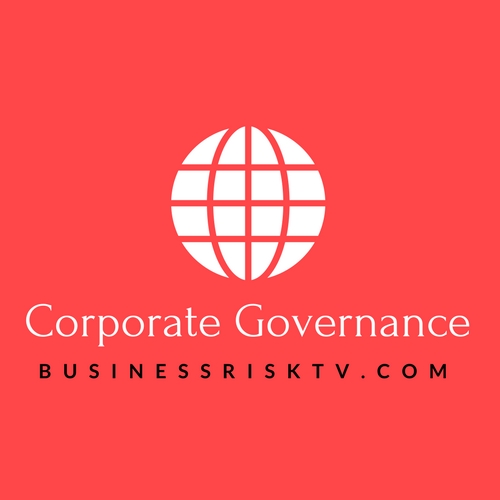
Subscribe to BusinessRiskTV.com Corporate Governance Tips for free enter code #CorpGov
Learn how to measure good corporate governance in UK
Develop your own effective corporate governance framework and corporate governance strategy. Know how to achieve effective corporate governance practices business wide.
Access email alerts to Corporate Governance updates. BusinessRiskTV and its business partners who will contact you about corporate governance news opinions and reviews.
Read more risk management articles and watch videos
Business Risk Management KPIs
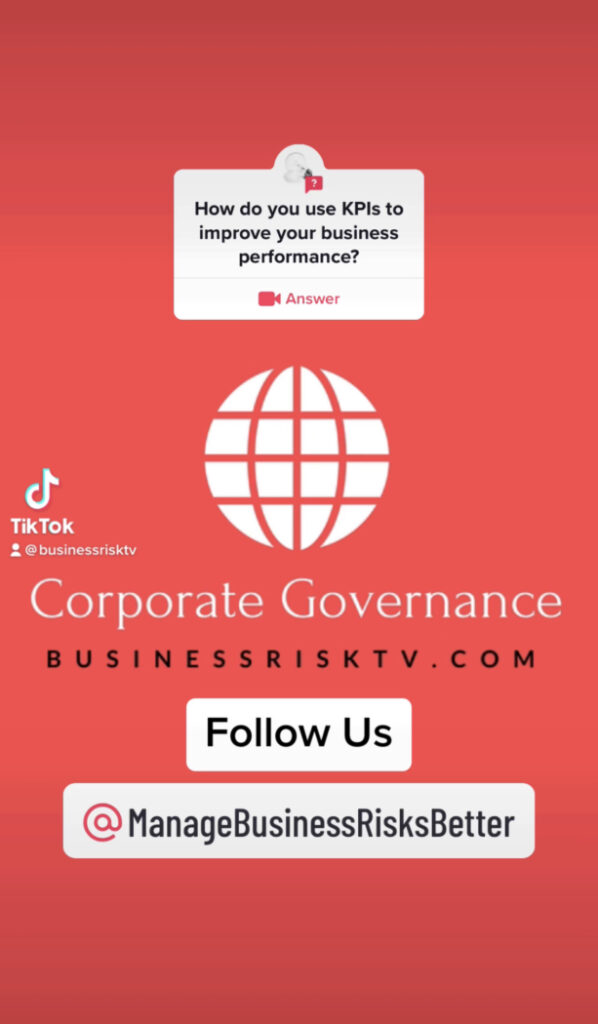
Risk management is a critical component of any successful business strategy. The ability to identify, assess, and manage risks is key to ensuring that an organisation can achieve its objectives and maximise its performance. One of the most effective ways to monitor and manage risk is through the use of Key Performance Indicators (KPIs).
KPIs are measurable values that can be used to track and evaluate the performance of an organisation. When used in conjunction with risk management, KPIs provide a powerful tool for identifying potential issues and taking proactive steps to mitigate them. In this article, we will explore how risk management KPIs can be used to improve business performance.
Identifying Key Risk Indicators
Before we can discuss the use of KPIs for risk management, we need to understand what types of risks we should be monitoring. Key Risk Indicators (KRIs) are metrics that provide early warning signs of potential risks. These indicators can help organisations identify emerging risks and take action before they become major issues.
There are several categories of KRIs that organisations should consider when developing their risk management strategy:
Financial KRIs: These metrics relate to financial performance and stability. Examples include cash flow, debt-to-equity ratio, and profitability.
Operational KRIs: These metrics relate to operational efficiency and effectiveness. Examples include process cycle time, customer satisfaction, and employee turnover.
Strategic KRIs: These metrics relate to the organisation’s long-term goals and objectives. Examples include market share, product innovation, and brand recognition.
Compliance KRIs: These metrics relate to adherence to regulatory and legal requirements. Examples include compliance with labour laws, environmental regulations, and data protection laws.
By tracking these KRIs, organisations can gain valuable insight into their risk profile and take proactive steps to mitigate potential issues.
Using KPIs for Risk Management
Once an organisation has identified its KRIs, it can begin to develop KPIs to monitor and evaluate them. KPIs should be specific, measurable, and aligned with the organisation’s overall objectives. They should also be easy to track and provide actionable insights.
Here are some examples of KPIs that organisations can use to monitor their KRIs:
Financial KPIs:
a. Cash Flow: This KPI measures the amount of cash that is coming in and going out of the organisation. It can be used to monitor liquidity and identify potential cash flow issues.
b. Debt-to-Equity Ratio: This KPI measures the amount of debt that an organisation has relative to its equity. It can be used to assess financial stability and identify potential financing issues.
c. Profitability: This KPI measures the organisation’s ability to generate profits. It can be used to identify potential revenue and cost issues.
Operational KPIs:
a. Process Cycle Time: This KPI measures the time it takes to complete a process from start to finish. It can be used to identify bottlenecks and inefficiencies in the organisation’s operations.
b. Customer Satisfaction: This KPI measures the satisfaction level of customers with the organisation’s products or services. It can be used to identify potential issues with customer service or product quality.
c. Employee Turnover: This KPI measures the rate at which employees are leaving the organisation. It can be used to identify potential issues with employee retention and satisfaction.
Strategic KPIs:
a. Market Share: This KPI measures the organisation’s share of the overall market. It can be used to monitor the organisation’s competitiveness and identify potential market shifts.
b. Product Innovation: This KPI measures the organisation’s ability to develop and introduce new products or services. It can be used to identify potential issues with product development or market trends.
c. Brand Recognition: This KPI measures the level of awareness and perception of the organisation’s brand in the marketplace. It can be used to identify potential issues with brand messaging or reputation.
Compliance KPIs:
a. Compliance with Labor Laws: This KPI measures the organisation’s adherence to labor laws and regulations. It can be used to identify potential legal issues related to employment practices.
b. Environmental Compliance: This KPI measures the organisation’s compliance with environmental regulations. It can be used to identify potential issues related to environmental sustainability and corporate responsibility.
c. Data Protection Compliance: This KPI measures the organisation’s compliance with data protection laws and regulations. It can be used to identify potential issues related to data privacy and security.
By tracking these KPIs, organisations can gain a better understanding of their risk profile and take proactive steps to manage and mitigate potential risks. For example, if an organisation’s cash flow KPI indicates that there is a potential liquidity issue, it can take steps to improve its cash management practices or explore financing options before the issue becomes a major problem.
In addition to monitoring KPIs, organisations should also establish thresholds or target levels for each KPI. These targets can serve as benchmarks for performance and can help organisations identify when a KPI is trending in the wrong direction.
For example, if an organisation’s customer satisfaction KPI target is 90%, and the KPI falls below that threshold, it can indicate a potential issue with customer service or product quality. By establishing targets for each KPI, organisations can quickly identify when a risk is emerging and take action to mitigate it.
Benefits of Using Risk Management KPIs
Using risk management KPIs offers several benefits to organisations, including:
Improved Risk Management: By monitoring and tracking KRIs, organisations can gain a better understanding of their risk profile and take proactive steps to manage potential risks. This can help organisations avoid major issues and improve their overall risk management strategy.
Better Decision Making: KPIs provide valuable insights into an organisation’s performance and can help leaders make data-driven decisions. By using KPIs to inform decision-making, organisations can improve their overall performance and achieve their objectives more effectively.
Increased Accountability: Establishing targets for each KPI can help hold individuals and teams accountable for their performance. This can help improve motivation and drive better results.
Enhanced Communication: KPIs provide a common language and framework for communication across an organisation. By using KPIs to communicate performance and risk information, organisations can ensure that everyone is on the same page and working towards the same goals.
Risk management is a critical component of any successful business strategy. By using KPIs to monitor and manage potential risks, organisations can gain valuable insights into their performance and take proactive steps to mitigate potential issues.
When developing a risk management strategy, it is important to identify key risk indicators and establish KPIs to monitor and evaluate them. KPIs should be specific, measurable, and aligned with the organisation’s overall objectives. By establishing targets for each KPI, organisations can quickly identify when a risk is emerging and take action to mitigate it.
Using risk management KPIs offers several benefits to organisations, including improved risk management, better decision-making, increased accountability, and enhanced communication. By leveraging KPIs as part of their risk management strategy, organisations can improve their overall performance and achieve their objectives more effectively.
#BusinessRiskTV #CorporateGovernance #Governance #CorpGov #CorporateGovernanceTips #CorpGovTips
Corporate Governance Tips BusinessRiskTV Improving Corporate Governance
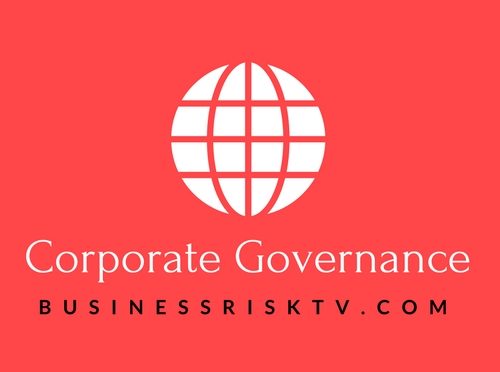
Business Risk Management Club